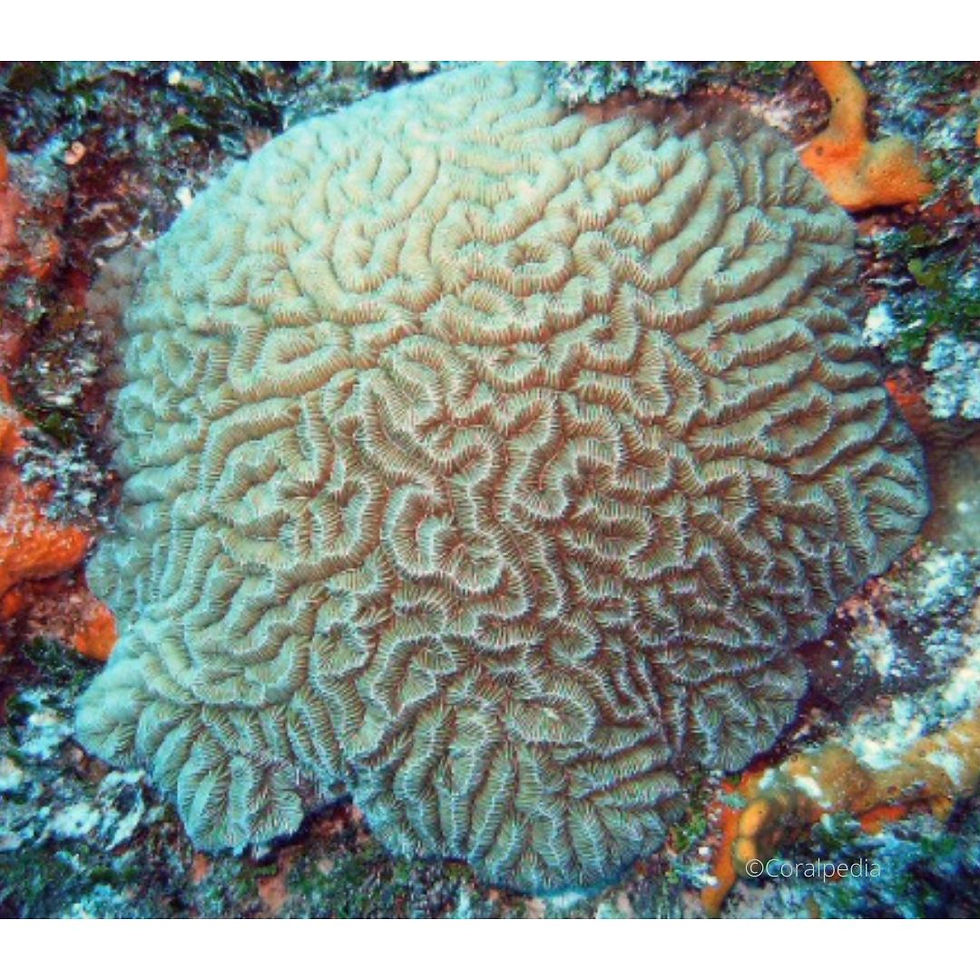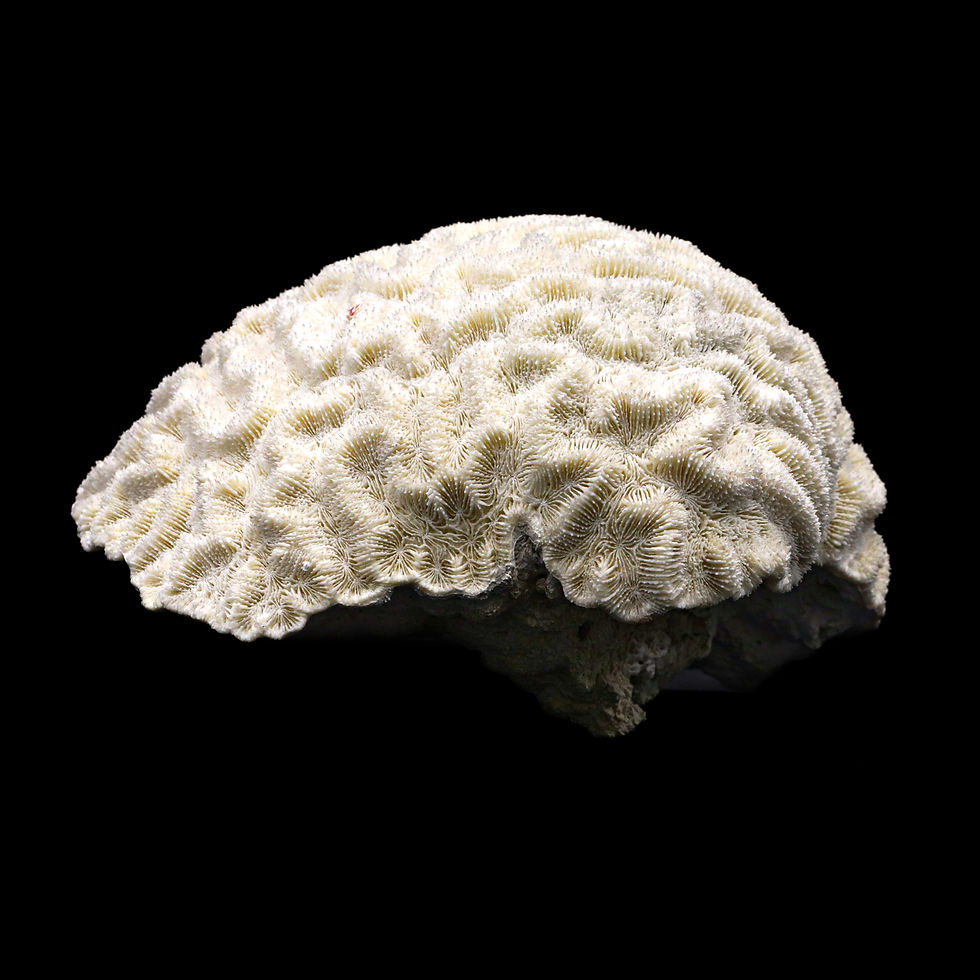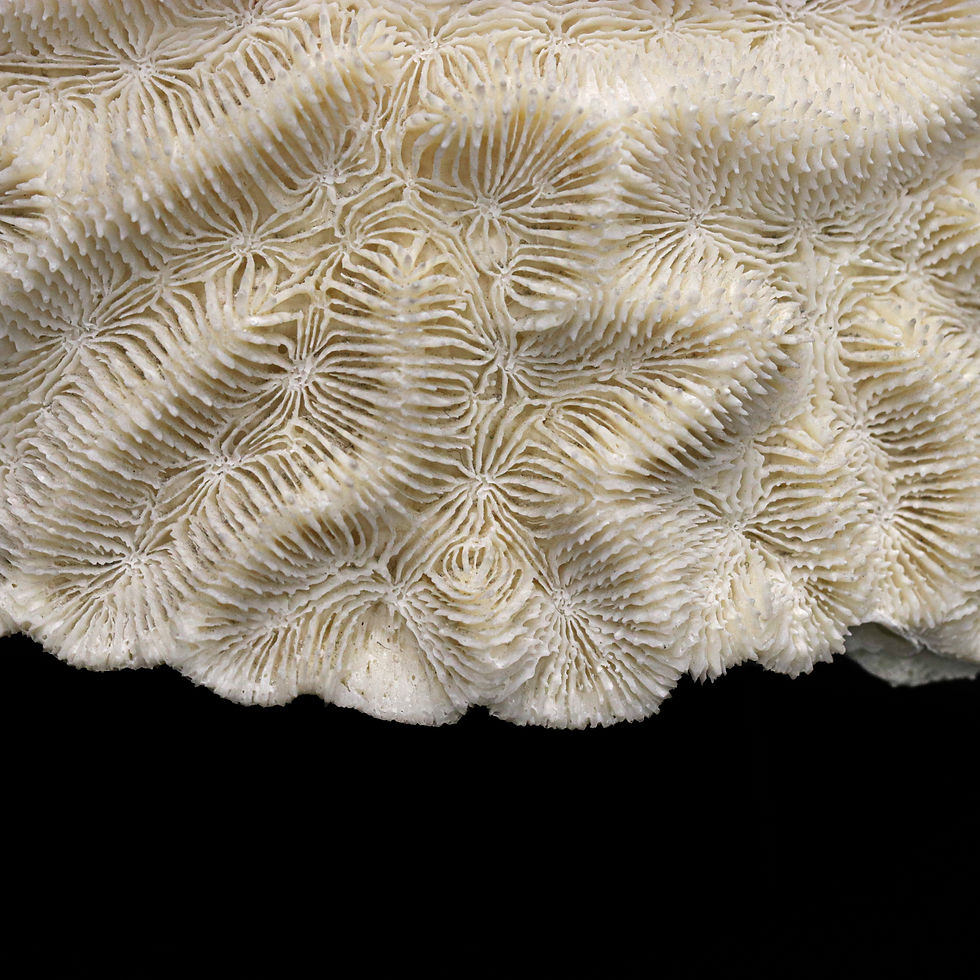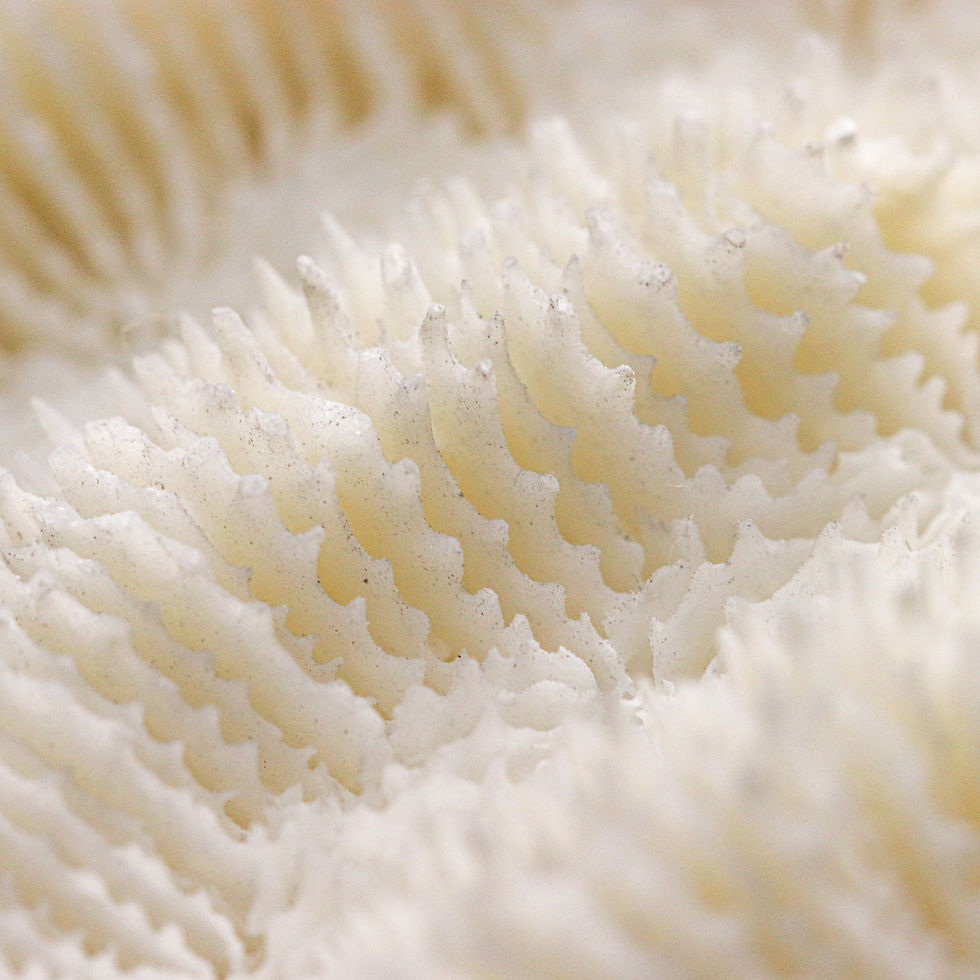Did you know that Hong Kong hosts as many as 84 species of hard corals? Coral reefs are sometimes referred to as the “tropical rainforests” of the ocean because they represent complex and highly productive marine ecosystems. Species of the genus 𝘔𝘦𝘢𝘯𝘥𝘳𝘪𝘯𝘢 Lamarck, 1801 is one of the species of hard corals, meaning that their non-living structure is made of calcium carbonate or limestone. With their purple and brain-like structure, they can grow up to 1.8 m tall and live 900 years! The 𝘔𝘦𝘢𝘯𝘥𝘳𝘪𝘯𝘢 species are found in the Caribbean Sea, the Atlantic and Pacific Oceans but not at high latitudes as hard corals are unable to survive in waters cooler than 18°C; so they can be observed in Hong Kong!

Despite their name, brain corals are in fact brainless. They are called brain corals because of their resemblance to an underwater brain. Although the species of 𝘔𝘦𝘢𝘯𝘥𝘳𝘪𝘯𝘢 could be mistaken for a rock, they are animals formed by multiple polyps. Polyps are small animals which release the calcium carbonate that constitutes the hard and non-living structure of the coral. Even if the polyps die, the limestone skeleton still remains. Each generation of polyps continues to add calcium carbonate to the structure; contributing to the growth of the coral which can reach a massive size if time allows. Polyps are also sessile, meaning that they stay in one position during their lifetime (better get a good spot then). Polyps work together and within a brain coral colonies are able to transfer molecules such as nutrients and oxygen to each other. One drawback of this channel of transfer is that if one polyp is ill , the pathogens can easily spread to the whole colony. This type of illness transfer may cause mass mortalities due to diseases such as black band disease.

The 𝘔𝘦𝘢𝘯𝘥𝘳𝘪𝘯𝘢 species are filter feeders and consume food such as zooplankton that floats past them or by stinging them using their tentacles. After stinging them, the tentacles can guide their prey into their mouths. Despite their stinging cells on tentacles, brain corals can still be preyed on by diurnal predators such as parrotfish, sea urchins, and snails. That’s why their activity is mainly nocturnal and their tentacles are usually retracted during the day, but extended at night to catch food. This ensures that the tentacles can’t be eaten during the daytime.

You may wonder how brain corals reproduce if they spend their life in a single place? Species of 𝘔𝘦𝘢𝘯𝘥𝘳𝘪𝘯𝘢 occur in both hermaphrodite and gonotropic colonies. Being hermaphrodites mean that they have both male and female reproductive organs, and reproduce sexually. While being gonotropic means that they only carry female gametes. This mechanism allows them to self- and cross-fertilize. Mass reproduction takes place only once a year, mostly from July to October, but how do they gather for reproduction? They release sperm into the water column to then be captured by other brain corals through filter feeding. They are then used to fertilize eggs within the colony. After the egg hatches, a larva is released into the water and begins to form a new colony after it settles (preferably somewhere with a nice view).

Their sessile lifestyle makes corals very vulnerable to small changes in the environment . Even with just a small change in water temperature or salinity, they may undergo bleaching or die due to the transfer of pathogens through polyps, modifying the value of these “tropical rainforests” for many other sea creatures that rely on them for their food and shelter! To appreciate the beauty and fragility of the brain and other corals, visit the HKBM.
Text: Lydia Chang

Comments